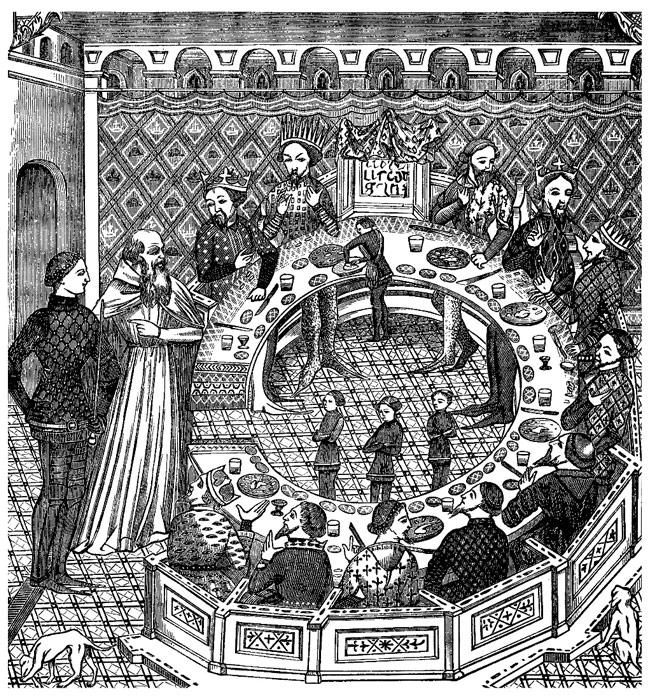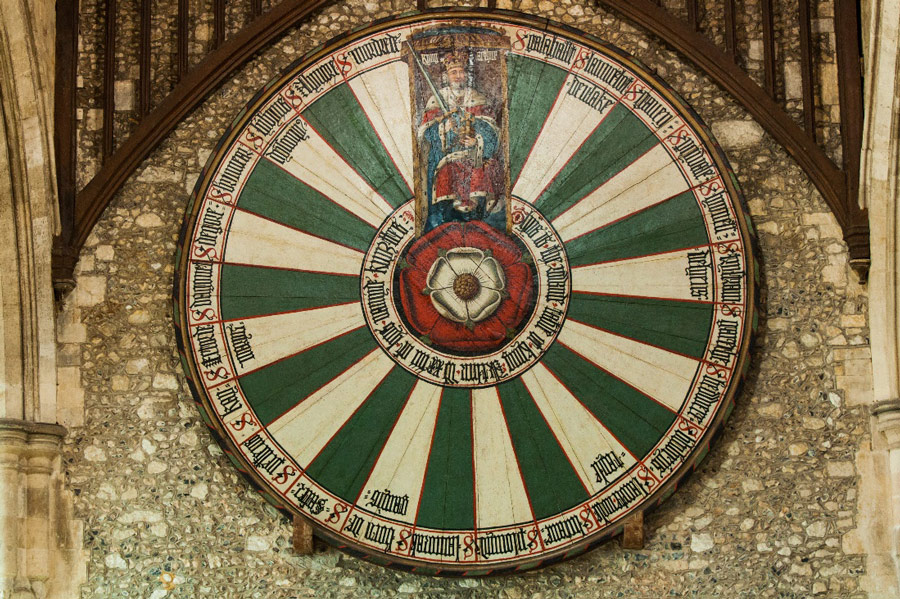The historic truth behind the legends of King Arthur has long been considered a no-go zone by most historians. To try to investigate whether the stories are based on fact seems destined to fail, baffled by the lack of dark-age documentation and ensnared by later fakery.
Accordingly, most “serious” historians seem happy to dismiss the stories as later medieval fictions, grudgingly allowing in passing that they may be based on earlier traditions but that the search for a reality under them is a waste of time.
But this does not satisfy. The stories are many and detailed, and while some are clearly allegorical there are others which, owing to the frequency of their appearance and in some cases the strangeness of their detail, argue for a basis on fact. Nobody would conjure such things out of thin air.
And so while identifying the truth may indeed be impossible, there is a place to start. And that place is Camelot. Like Merlin or the Battle of Baddon it is one of the core pillars on which the legends rest. If anything is real about Arthur, Camelot is.
So what do we know?
The Court of King Arthur
Much of Camelot is certainly a later legend. The city, Arthur’s capital, first appears in 12th-century French romances and, since the Lancelot-Grail cycle, has come to be portrayed as the fabulous metropolis of Arthur’s dominion and a symbol of the Arthurian world.
The stories place it someplace in the United Kingdom and sometimes actively associate it with real cities, though its specific location is rarely given. It was either a known location to medieval readers, with no further detail necessary, or it was wholly imaginary.
Most historians believe the latter, with its geography an unnecessary intrusion of realism into the portrayal of knightly ideals the chivalric romance writers were aiming for. Nonetheless, debates over the site of the “actual Camelot” have raged since the 15th century and continue to this day.
In finding Camelot we may well find the underlying truth of Arthur, but the reverse is also possible. Arthur himself, in his characterization, the details of his life and in his famous deeds, may give us the location where he lived.
- Was King Arthur Real? Examining the Historical Record
- Finn McCool, the Irish Legend: A Template for King Arthur?
Some speculate that the legendary person is based on a mixture of real-life British kings of the dark ages. Others believe the narrative is based on a single person, perhaps a war leader, who fought the Saxon advance across southern England.

This setting for Arthur’s life offers intriguing possibilities. The English natives and the Saxons who were driving them west built largely out of timber and thatch. Historians have speculated that Camelot, rather than being a purpose-built castle, could have been housed in a structure already constructed, something of stone. And there were a people recently in England who built suitably grand stone structures: the Romans.
Castles old enough to be Arthur’s court do exist natively. The intriguing Tintagel in Cornwall, traditionally remembered as the place of Arthur’s birth, may also have served as the template for his later capital. But the Roman structures were so many, and so grand, that it would be fitting for this great king to choose one as his palace.
What Do the Sources Say?
Perhaps a clue to its likely location can be discovered in the sources we have for the King Arthur legend. The first mention of Arthur appears in a poem written about AD 594. Aneirin Y Gododdin is the earliest extant Welsh poem and consists of a succession of distinct elegies to the men of the Gododdin who died fighting against the Angles of Deira and Bernicia during the Battle of Catraeth (believed to be modern-day Catterick in Yorkshire).
Almost all Britons were slaughtered, and their lands were subsumed into the Anglo-Saxon kingdoms. One of these elegies mentions Arthur, implying that he was already a well-known figure at the time the poem was written.
The earliest surviving account of Camelot however appears much later. Arthur’s capital is referenced for the first time in Chrétien de Troyes’s poem Lancelot, the Knight of the Cart, which dates from the 1170s, and even then not in all manuscripts and with many inconsistencies.
The name is spelled Chamalot, Camehelot, Chamaalot, and Camalot in the other manuscripts and sometimes omitted entirely. More worryingly, nothing in Chrétien’s poem foreshadows the significance of Camelot in later romances.
For Chrétien, Arthur’s main court was in Caerleon, Wales; in Geoffrey of Monmouth’s Historia Regum Britanniae and subsequent literature, this was the king’s primary base. Chrétien represents Arthur holding court in several cities and castles, as a later medieval monarch would. Camelot for him was only one of several locations Arthur chose, mentioned almost in passing.
Candidates for the Real Camelot
But it is mentioned. Caerleon is a real place (and the site of a suitably imposing Roman fortress), so why not Camelot too? Perhaps Tintagel needs to be considered in more detail.
- The Legendary Geats: What Happened to Beowulf’s People?
- Owain Glyndwr – the (Other) Welsh King Arthur?
Recent excavations have uncovered pottery there dating from the fifth and sixth centuries, indicating that Tintagel was certainly occupied during the Romano-British period. It is huge, self-sustaining and easily defensible, but perhaps too remote for a suitable capital. And, of course, it is mentioned by name elsewhere, which would make renaming it “Camelot” an oddly unhelpful decision.
Geoffrey of Monmouth reported in his Historia Regum Britannae that Arthur was born in Cornwall at Tintagel Castle. Indeed, a 1,500-year-old piece of slate with two Latin inscriptions was discovered in Tintagel in the late 1980s, implying a connection between Arthur and Tintagel. The slate’s second inscription reads “Artognou, father of a Coll descendent, has had [this] made”. Geoffrey of Monmouth claims that King Coel (Old King Cole of the nursery tale) is one of Arthur’s forefathers.
But we already know Tintagel has Arthurian associations. Camelot’s lack of precise location and importance as a symbol of the Arthurian world may in fact be the point, which allows the castle itself to be reimagined, transformed into a grand palace of the Middle Ages.

Another commonly suggested location is Winchester Castle in Hampshire. By now however we are some 1,000 years from the supposed time that Arthur lived, with Thomas Malory’s 15th-century work, Le Morte d’Arthur. It is supposed that Winchester Castle was Camelot, and a round wooden tabletop has been displayed in the Great Hall of Winchester Castle for hundreds of years. It is painted with the names of King Arthur and the 24 knights, as well as their positions at the table.
Both the castle and the table however are too new. This round table was carbon-dated in 1976 to roughly the 13th/14th centuries. The castle as we see it today dates from the 11th century and there is no evidence to suggest an earlier construction resembling the grand traditions of Camelot. It is safe to say, by this point, that we are in the realms of fiction.
Other suggestions from this time, such as Cadbury Castle in Somerset, have more archaeology to support their association. But these are later guesses, something the modern researcher is far better positioned to attempt.
Maybe Camelot is out there still, either hiding in plain sight or waiting to be uncovered. But for now the capital and court must remain as legendary as the king who ruled there.
Top Image: Is there more to Camelot than fiction? Source: Maksym Yemelyanov / Adobe Stock.
By Bipin Dimri